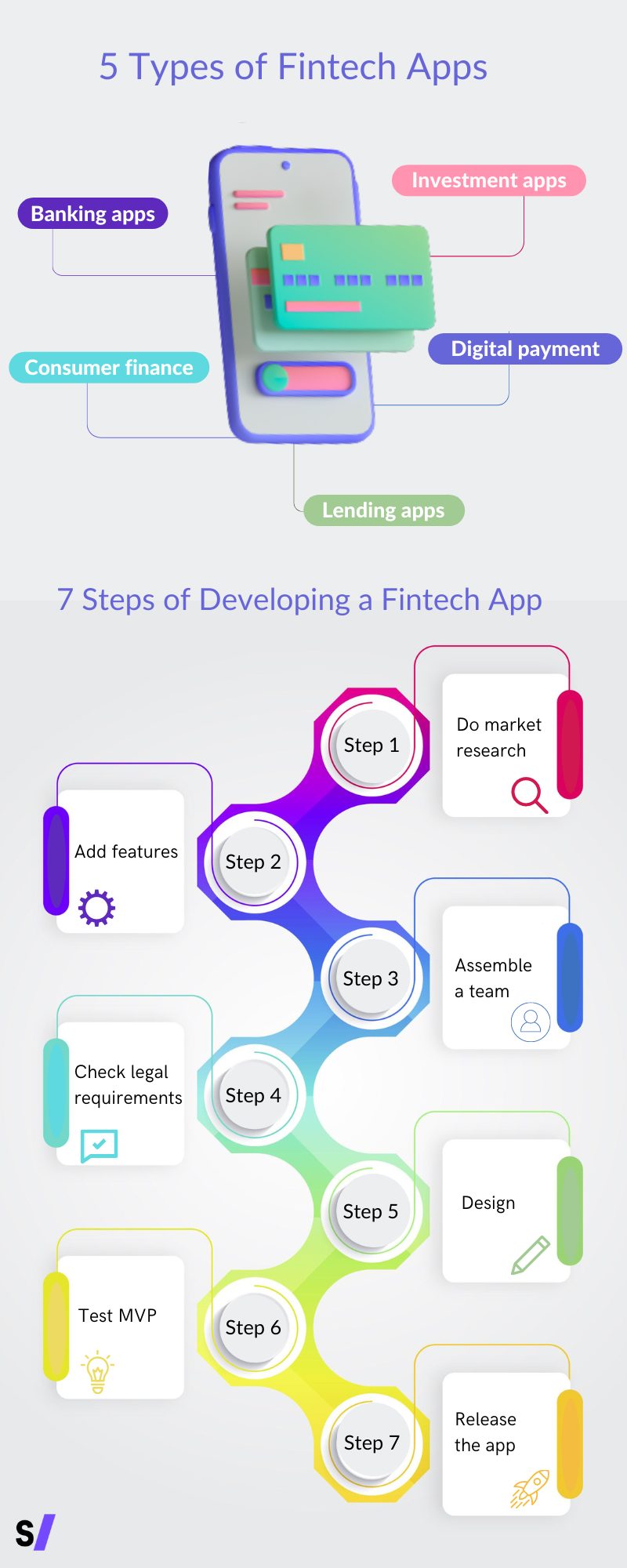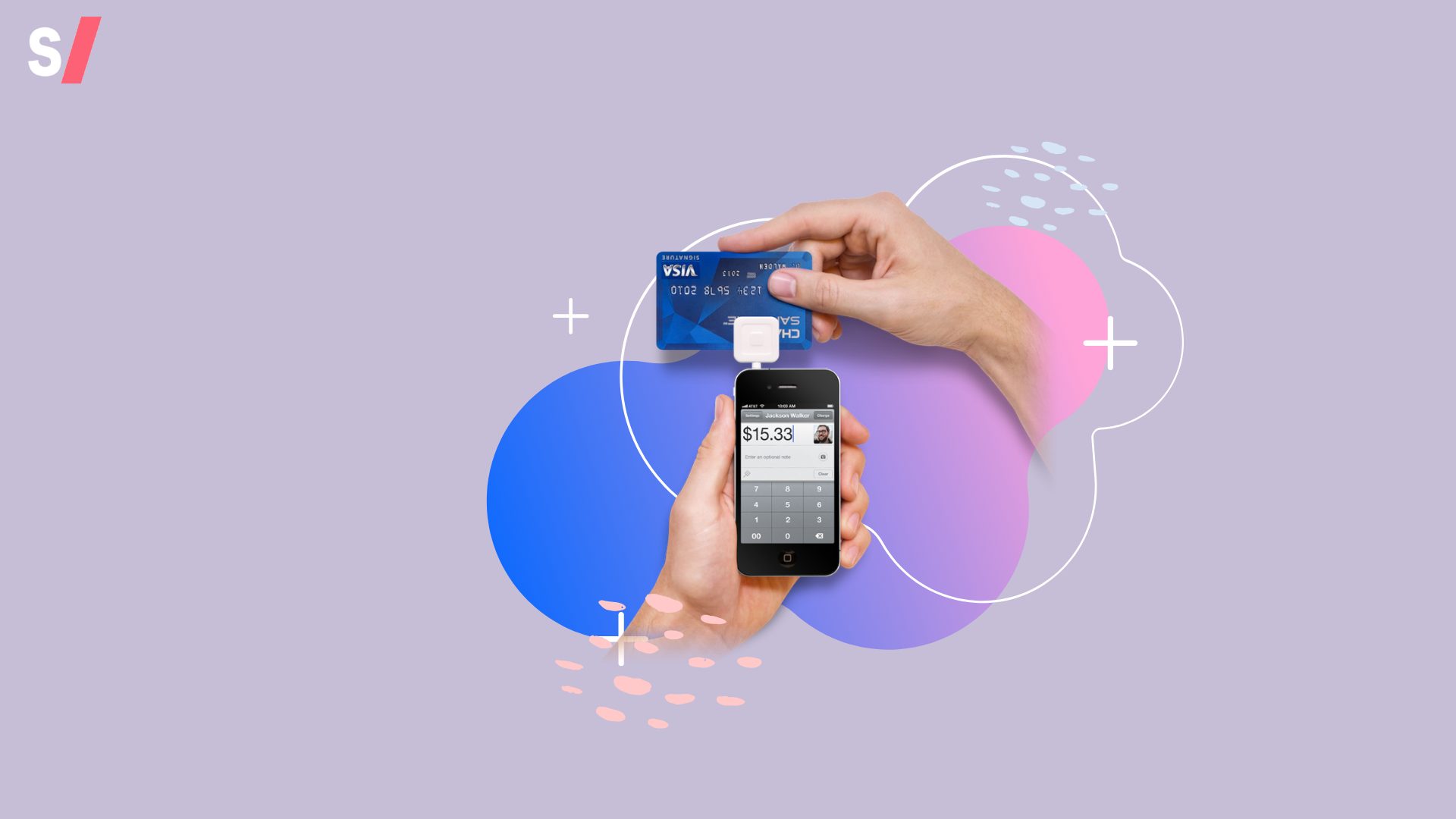Mobile banking, apps for investment, and other fintech tools deeply penetrated our daily life. The fintech developers seem to be sitting on a gold mine, as financial technologies are in need virtually everywhere. From smooth online shopping to setting a predictable health insurance account, financial applications empower customers in every corner of their livelihood. But not only individuals benefit from fintech solutions.
Fintech application development rethought many industries, helping businesses lead quicker and more transparent money transfers. Today, the fintech innovation is spanning multiple business models – B2B, B2C, B2G, G2C, and G2B. For now, the industry of financial software application development is constantly on the rise. But where does an aspiring fintech developer need to begin to build a fintech app?
Finance app development starts with choosing the type of application. Then a fintech team proceeds with the common steps of any application development, from research to testing. We put together all the core information down below to help you have a glance at the essential stages.
Choosing the type of application
Banking apps
Banking apps are used for carrying out financial transactions and managing bank accounts without visiting a branch. Users enjoy multiple services from fast money transfers to sophisticated options typically available in private banking software. Each year, fintech application development evolves and the traditional range of options broadens, so users generally expect from a banking app the possibility to apply for overdrafts, manage savings, and calculate a budget.
Lending apps
Lending apps provide transparent access to credits and loans, effectively connecting lenders and borrowers. The main features provided are usually credit score, loan application form, billing, and payment. Some lending systems allow users to prevent overdrafts by making automatic deposits, get discounts in partnering shops, perform credit calculating and monitoring, and more.
Investment apps
Investment apps are used to buy, sell and trade stocks online. Whether you need to make trades, invest in cryptocurrency, or examine analytics, investment apps provide a wide range of services for managing your assets.
Consumer finance
These are personal finance apps that allow users to control their money in-flow and out-flow. Consumer finance apps allow to set and manage budgets and create reasonable and data-based savings plans. Remarkably, such apps help to improve spending habits by using notifications and reminders.
Digital payment
Digital payment apps are used regularly for all mobile payments. They are usually bonded to a credit/debit card or a bank account, and bring together online payment systems and e-wallets. As they’re cashless, it is very convenient to use them for person-to-person money transfers and payments.
Planning fintech app development
Building a fintech app of any type needs a thorough and dynamic approach. The easiest way to waste limited resources and precious time is to stick to a rigid plan. Moreover, if you won’t adapt to changing circumstances, then you may finish with an inappropriate product that isn’t tailored to the current customer needs.
Fintech product development in 7 steps:
Step 1: Research
Fintech app developers sit still before accurate market research is carried out. First of all, you need to investigate who is your audience and what are the competitors on the market. This information will define the features you will add to your application.
Step 2: Features
Ensure that you clearly define product features. Double check, you could add extra attributes that may not be coherent with customer needs and your business objectives.
Step 3: Legal requirements
Your app must comply with all law regulations depending on the country. It may include anti-money laundering and know your customer compliances, digital signature certificate, and others.
Step 4: Team
In every tech business, it is crucial to rely on a highly skilled team to succeed. If you are ready to hire fintech developers, make sure that you assign the other crucial roles for product development:
- Project Manager;
- Business analysts;
- UI/UX designers;
- Backend developers
- Front-end developers;
- Quality Assurance engineer.
Step 5: Design
Check if the app is convenient to use.
Does it deliver a good customer experience?
Is the UX/UI design working properly?
Step 6: MVP development
Testing MVP on the real targeted audience will give you a clear understanding of first consumers’ impressions, bug reports, and strategy improvements if needed.
Step 7: Testing
The last stage remains in flux and includes further marketing research and monitoring competitors’ activities. You should control the feedback and support to respond in time and avoid any issues.
It looks like the end. But before you outline your development strategy, we suggest you consider the fundamental points that ensure the success of tech business at any time:
- Adding advanced technologies
Most financial organizations offer to users a general set of options, so it becomes harder for a company to differ from the rest. To succeed, fintech businesses constantly add handy and unprecedented features to keep attracting new customers.
We advise thinking of those features that will grab the attention of your users. Here are some ideas:
– security measures (commonly used: two-factor authentication, encryption, biometric security, blockchain, and others);
– integration with third-party services (like PayPal or bank API’s);
– voice integration;
– 24/7 live support or chatbot.
- Scaling IT department
To ensure sustainable business growth, financial app development companies keep increasing the number of experienced financial app developers that drive innovations.
Do you also want to stand out amidst leading financial app development companies? To help you craft a unique solution, our team can provide you with bespoke fintech app development services.
We put together our best practices in assisting various fintech companies to help you climb your ladder of success faster. Gain a competitive edge with a well-thought development strategy.
05 October 2021






